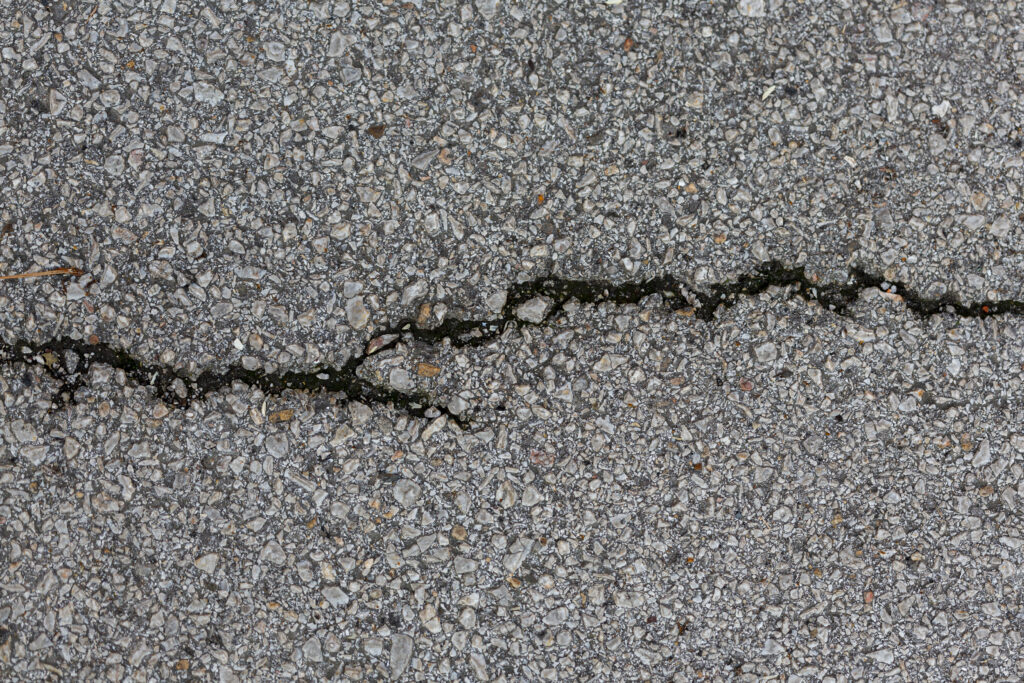How Does the Age of Concrete Affect Its Resistance to Freeze-Thaw Damage?

Concrete is known for its durability—but like everything else, it ages. And with age comes vulnerability. Over time, even the strongest concrete begins to lose its ability to resist freeze-thaw cycles, especially in climates where winter weather is frequent and severe.
Understanding how aging affects concrete’s structural integrity can help property owners take proactive steps before damage appears.
The Surface Tells the Story
One of the first signs of aging in concrete is on the surface. With time, the surface becomes more porous, much like aging skin. These increased pores and microscopic cracks allow water to enter more easily, setting the stage for internal stress during cold weather.
When that water freezes and expands, the pressure has nowhere to go—and the result is surface scaling, pop-outs, or even deep cracks.
Elasticity also diminishes over time. Fresh concrete has a certain level of flexibility that helps it absorb small shifts in the earth or slight expansion from temperature changes. But as concrete ages, it becomes more brittle, and this rigidity makes it far more prone to fracturing under stress.
Why Older Concrete Is at Higher Risk
Aging concrete often suffers from years of environmental and mechanical stress, including:
- Earth movement: Subtle shifts in the ground cause cracking over time.
- Human and equipment traffic: Repeated weight stress from vehicles, machinery, or even foot traffic can weaken the slab.
- Repeated freeze-thaw cycles: These are especially destructive to older concrete that was either not air-entrained or has developed fine surface cracks that allow moisture infiltration.
As each freeze-thaw season passes, small imperfections grow larger. Water seeps into tiny fissures, freezes, expands, and slowly erodes the concrete from within. What starts as minor cosmetic wear can become structural failure if left unaddressed.
Preventive Maintenance Is Key
Older concrete may be more vulnerable, but that doesn’t mean it’s beyond saving. With proper care and maintenance, its lifespan can be extended significantly. Here’s how:
- Seal regularly: Sealing helps reduce porosity and prevent moisture infiltration.
- Use safe ice melts: Choose chloride-free products that won’t accelerate surface wear or contribute to chemical degradation.
- Inspect annually: Check for surface scaling, new cracks, or changes in color and texture that could indicate moisture problems.
- Resurface when appropriate: If the body of the concrete is still strong but the surface is flaking, resurfacing can restore both appearance and protection.
Conclusion
Concrete doesn’t age gracefully without help. As the surface becomes porous and internal elasticity declines, older slabs face greater challenges when dealing with freeze-thaw cycles, physical stress, and environmental shifts.
The key is not to wait for visible damage to act. Understand that older concrete is inherently more fragile—and build a plan to protect it through sealing, resurfacing, and the use of safe winter treatments. Proactive care today can prevent expensive repairs tomorrow.
Regular inspections, especially before and after winter, are essential. Addressing minor issues like surface cracks or early scaling right away can stop more severe degradation in its tracks. Investing in preventative maintenance not only saves money but also preserves the safety, appearance, and function of your concrete surfaces. Aging concrete can still serve you well—if you give it the attention it needs at the right time.

